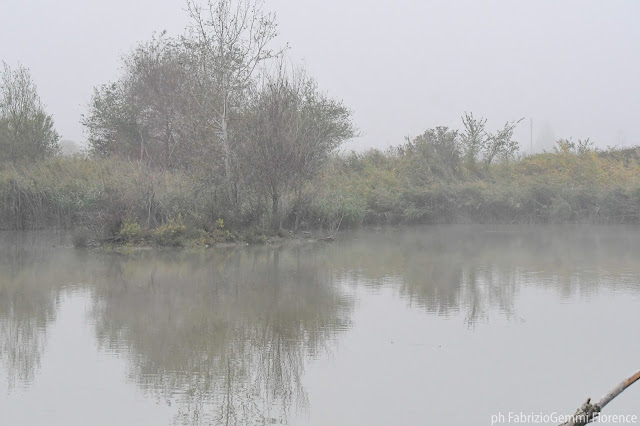 |
Today's landscape, Querciola pond, Parco della Piana, October, 2020
|
Today was not the best morning to take pictures at the Parco della Piana di Sesto (Florence, Tuscany). However, recent rains have made the ponds alive, which have become filled with many bird species, like the Northern Shoveler - Mestolone (Spatula clypeata), the Teal - Alzavola (Anas crecca), the Mallard - Germano reale (Anas plathyrynchos) for the dabbling ducks; the Little Grebe - Tuffetto (Tachybaptus ruficollis), the Eurasian Coot - Folaga (Fulica atra), the Moorhen - Gallinella d'acqua (Gallinula chloropus) and the Grey Heron - Airone cinerino (Ardea cinerea). In the reeds there were many Common Chiffchaffs - Luì piccoli (Phylloscopus collybita) and a Cetti's Warbler - Usignolo di fiume (Cettia cetti).
 |
Northern Shovelers - Mestoloni. Querciola pond, Parco della Piana, October, 2020
|
 |
| Coot - Folaga. Querciola pond, Parco della Piana, October, 2020 |
 |
Little Grebe -Tuffetto. Querciola pond, Parco della Piana, October, 2020
|
 |
| Common Chiffchaff - Luì piccolo. Querciola pond, Parco della Piana, October, 2020 |
| Common Chiffchaff - Luì piccolo. Querciola pond, Parco della Piana, October, 2020 |
 |
Northern Shoveler - Mestolone. Querciola pond, Parco della Piana, October, 2020
|
 |
Northern Shoveler - Mestolone. Querciola pond, Parco della Piana, October, 2020
|
 |
Moorhens - Gallinelle d'Acqua. Querciola pond, Parco della Piana, October, 2020
|
 |
Teal - Alzavola. Querciola pond, Parco della Piana, October, 2020
|
 |
Cetti's Warbler - Usignolo di fiume. Querciola pond, Parco della Piana, October, 2020
|
 |
Cetti's Warbler - Usignolo di fiume. Querciola pond, Parco della Piana, October, 2020
|
Common Chiffchaff - Luì piccolo. Querciola pond, Parco della Piana, October, 2020

| Common Chiffchaff - Luì piccolo. Querciola pond, Parco della Piana, October, 2020 |
|














Comments
Post a Comment